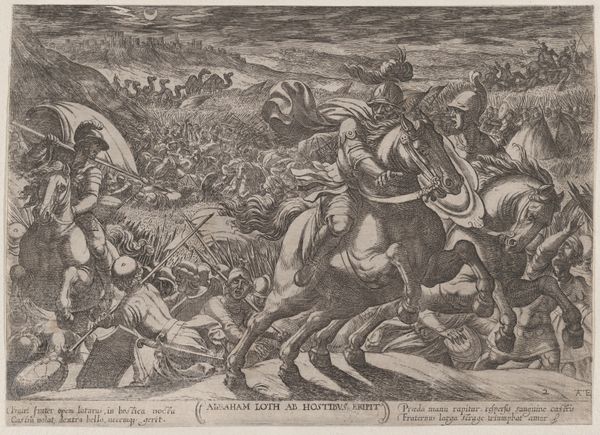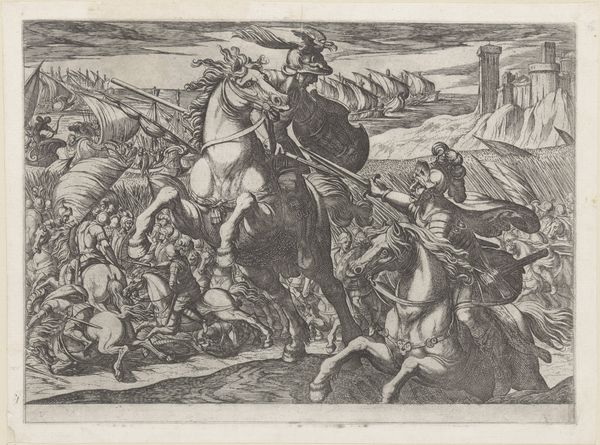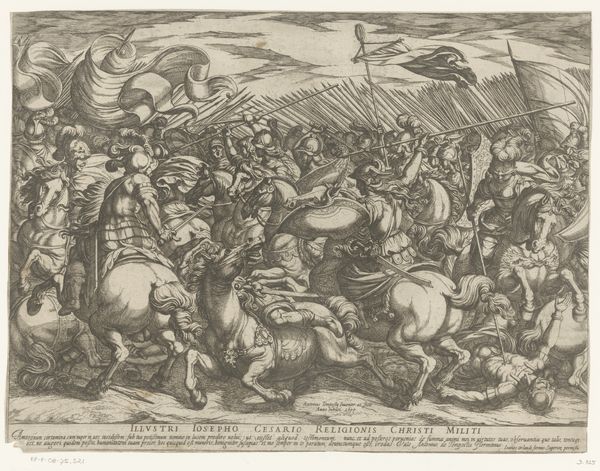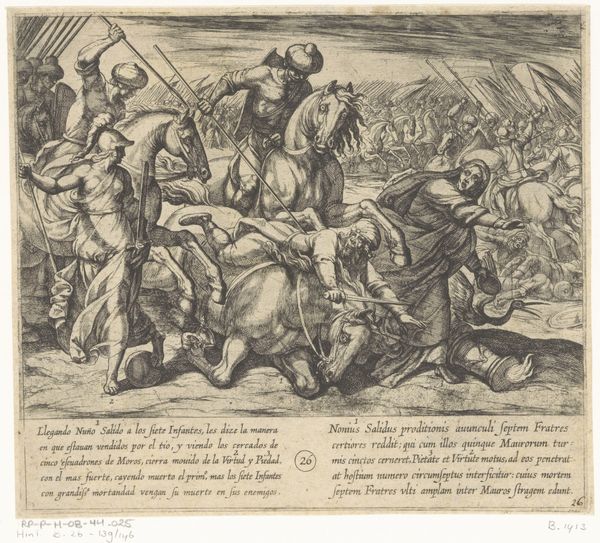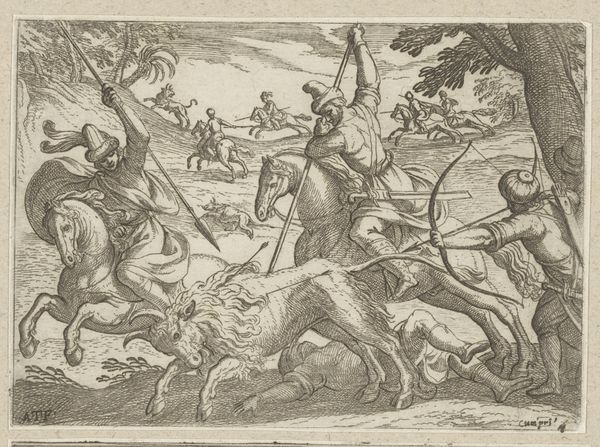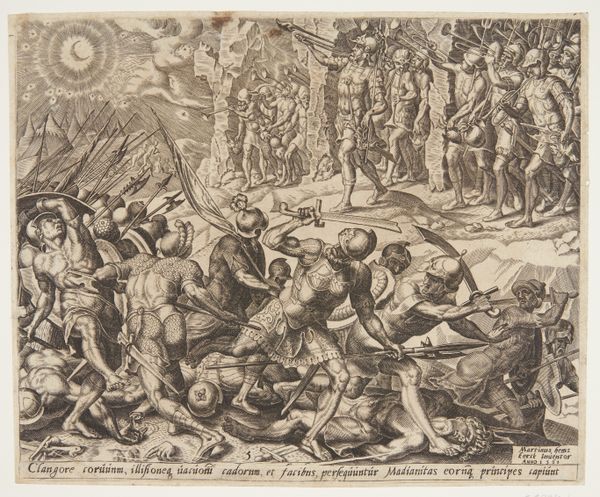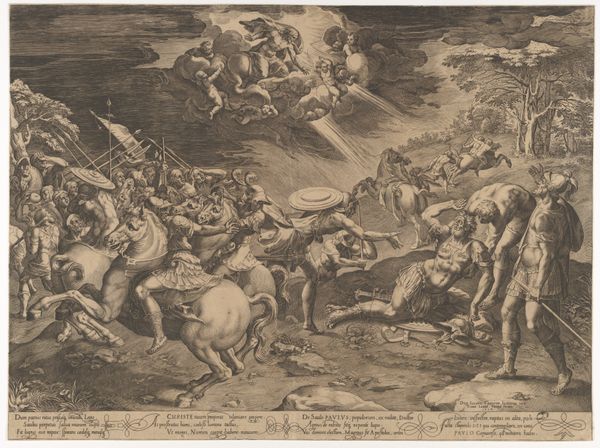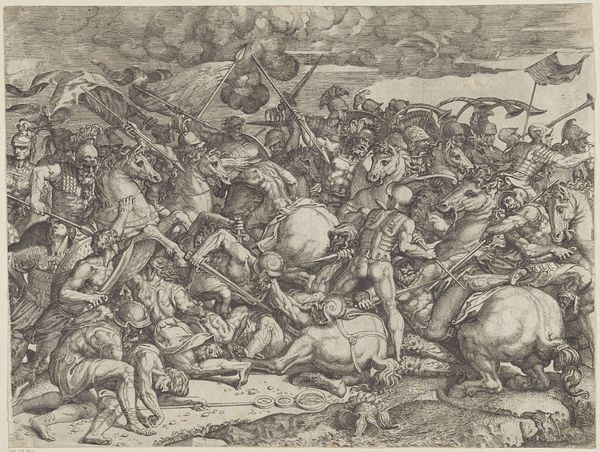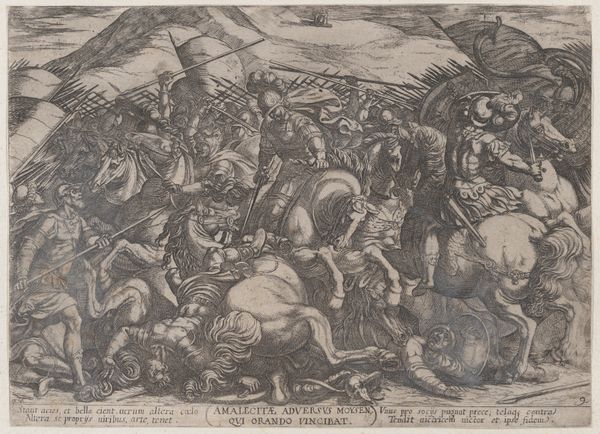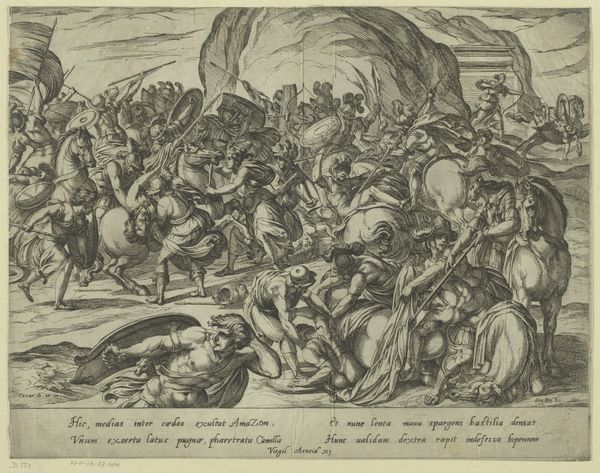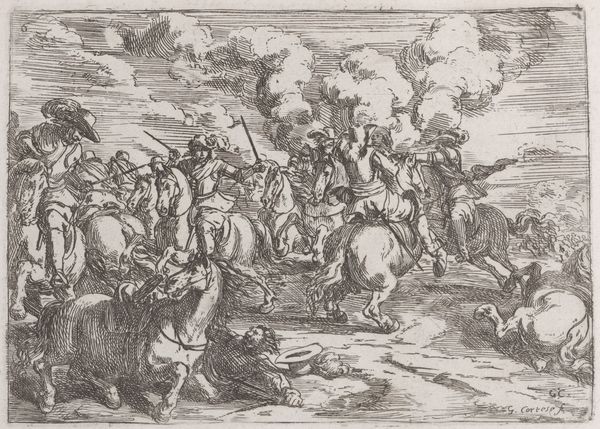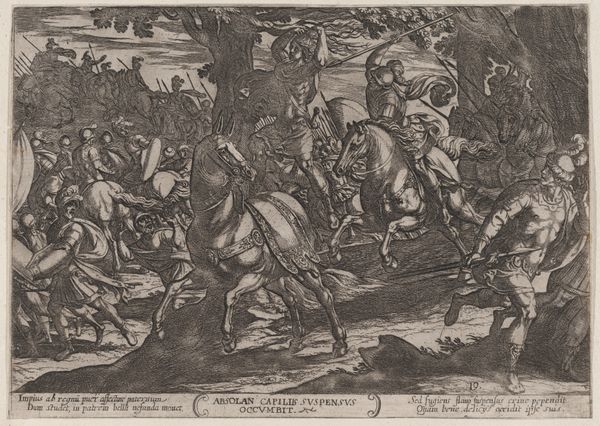
Plate 10: The Fall of Jericho, from 'The Battles of the Old Testament' 1585 - 1615
0:00
0:00
Dimensions: Sheet: 7 7/8 × 11 1/16 in. (20 × 28.1 cm)
Copyright: Public Domain
Curator: This is Plate 10: The Fall of Jericho, from ‘The Battles of the Old Testament’ created by Antonio Tempesta between 1585 and 1615. The artwork, housed here at the Met, is an engraving. Editor: The density of the lines immediately conveys a chaotic energy—a whirlwind of combat rendered in monochrome. It feels almost claustrophobic. Curator: Indeed. Observe how Tempesta employs incredibly fine lines to construct both depth and drama. The composition, though dense, reveals a calculated arrangement of figures and architectural elements. Note the rhythmic repetition of curved forms in the soldiers' bodies and the city walls. Editor: This depiction is more than just formal exercise, it reveals the ruthless logic of conquest. Jericho, the city breached, isn’t merely a backdrop; it is the object of complete and utter devastation. One might ask if it intends to highlight how structures of power rely on brutal methods. The bodies in the foreground present death, despair, and a vivid material record of conflict. Curator: Precisely. The Mannerist style is quite evident, evident in the elongated limbs and the dramatic poses of the figures. Look closely at the armor detailing. It suggests a celebration of military prowess. Editor: And also an implicit endorsement, or at the very least, a normalized depiction of extreme violence legitimized by religious mandate. This reading is essential; art seldom exists in a vacuum, removed from the moral ambivalences of the historical moment in which it came into being. It makes you wonder whether the piece was perhaps functioning as propaganda or whether its primary aim was documentation? Curator: Your reading acknowledges those complexities. For me, it reveals a clear emphasis on structure and artistic skill. The technical achievement—the sheer virtuosity of the engraving—is undeniable. Editor: Ultimately, Antonio Tempesta’s print confronts us with uncomfortable realities—religious fervor and historical violence are woven tightly into its formal artistry. Curator: I concede that this interpretation provides insight into the historical impact.
Comments
No comments
Be the first to comment and join the conversation on the ultimate creative platform.
